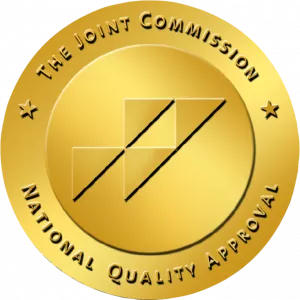Methamphetamine, or "meth," seems to have its own gravitational pull, drawing people in with promises of euphoria but often leaving devastation in its wake. You've probably heard of it, maybe even seen its portrayal in pop culture, like the infamous blue meth from Breaking Bad. But what's the deal with blue meth? Is meth blue for real? Is it as real as the headlines make it out to be? And, more importantly, how can someone caught in its grip find their way back to a life of clarity and freedom? Join us as we explore the world of blue meth – separating fact from fiction – and discover the path to breaking free from addiction.
Essentially, Blue Meth shares the same chemical composition as regular, plain old meth. Contrary to popular belief, blue meth is not just a creation of Hollywood scriptwriters. While its prominence in Breaking Bad definitely put it into the spotlight, the genesis of blue meth can be traced back to clandestine meth labs operating in the shadows of society. The distinctive blue hue of the drug is believed to come from a chemical added during the manufacturing process. In short, blue methamphetamine has the same chemical makeup as its traditional counterpart: a potent stimulant that affects the central nervous system, leading to increased energy, alertness, and euphoria. That being said, the addition of certain chemicals – like iodine or pseudoephedrine – during its creation can make the final product have a blue tint. While the exact recipe for blue meth is not generally known, its striking blue appearance has become synonymous with purity and potency in the illicit drug trade. But the reality of blue meth is not too glamorous. In truth, the blue coloration is often indicative of impurities or contaminants introduced during the manufacturing process, rather than a marker of superior quality. Furthermore, the consumption of blue meth poses the same inherent risks as its colorless counterpart, including addiction, overdose, and long-term health complications.
Breaking Bad and Blue Meth
No exploration of blue crystal meth would be complete without acknowledging its iconic role in the groundbreaking television series "Breaking Bad". Created by Vince Gilligan, Breaking Bad follows the transformation of Walter White, a high school chemistry teacher-turned methamphetamine manufacturer, as he descends into the criminal underworld. Central to the show's narrative is the production and distribution of Walter's signature blue meth – a product so pure and potent that it becomes synonymous with his alter ego, Heisenberg. Breaking Bad not only captivated audiences with its riveting storytelling and complex characters, but also sparked widespread fascination with the world of illicit drug trade, shining a spotlight on the dangers and consequences of methamphetamine addiction. In Breaking Bad, blue methamphetamine serves as more than just a plot device – it becomes a symbol of power, temptation, and moral decay. The distinctive blue hue of Walter White's product sets it apart from the competition, elevating its status within the criminal underworld and fueling his meteoric rise to prominence. However, the allure of blue meth, or blue sky meth comes with a steep price, exacting a toll on both Walter and those who become ensnared in its web. As the series unfolds, blue meth becomes a visual reminder of the moral compromises and personal sacrifices made in the pursuit of wealth and power, ultimately leading to the downfall of its creator and those who dare to indulge in its deadly embrace.
Is Blue Meth Real?
Yes, blue Meth is real, but it’s not the shiny, pure product you see in Breaking Bad. It’s a gritty, dangerous substance with real-world consequences.
While Breaking Bad made blue meth famous, it’s not just a figment of Hollywood’s imagination. So can meth be blue? The short answer is Yes. Instances of blue-tinted methamphetamine have been reported, although they’re rare and often linked to specific manufacturing processes. But here’s the kicker: the blue color doesn’t necessarily mean the meth is pure or potent. In reality, it’s often a sign of impurities or additives during production, rather than a stamp of quality.
No matter the color, using meth is not a good idea. Addiction, overdoses, and long-term health issues don’t discriminate based on color. Plus, the illegal nature of meth production means there’s no quality control – you never really know what you’re getting. So, while blue meth might look cool on TV, the reality is far from glamorous.
Dangers of Meth Use
One of the most immediate dangers of methamphetamine use is its profound impact on physical health. Meth hits hard, especially on your body. It puts your heart and blood pressure on overdrive. Your heart races, your blood pressure skyrockets, and the risk of heart attacks and strokes increase significantly. Plus, there's the dental nightmare known as "meth mouth" – tooth decay, gum disease, and teeth falling out. Additionally, meth messes with your appetite and sleep, leaving you malnourished, losing weight, and tossing and turning all night.
But it's not just your body taking a hit; your mind gets tangled up too. Chronic meth use can ramp up anxiety, make you paranoid, and even induce full-on psychosis with hallucinations and delusions. Your brain chemistry takes a beating, messing with your decision-making skills, memory, and how you handle your emotions. It's like a vicious cycle – meth messes with your head, making you want more, and then leaves you feeling even worse. Meth addiction has a way of dragging everything down with it. Relationships are strained, friendships fade away, and work becomes a distant memory. The whole community feels the impact too – from increased crime to struggling families, the ripple effects of meth use spread far and wide.
In short, meth use is not just about the health costs; it's about the emotional toll, the shattered lives, and the communities left picking up the pieces.
Treatment for Meth Addiction
Facing meth addiction head-on can feel overwhelming, but there's hope. Effective treatment involves a mix of therapies tailored to your unique needs. Therapeutic Support and Community
Therapy, both individual and group, forms the backbone of meth addiction treatment. Through sessions like cognitive-behavioral therapy (CBT) and group counseling, you can discover triggers, build coping skills, and rewrite the narrative of addiction.
But it's not just about the therapy sessions; it's also about the community. Peer support groups provide a space to share experiences, find solidarity, and celebrate victories both big and small.
Recovery from methamphetamine addiction is a journey, and we're here to walk it with you. At Avenues Recovery Center, our holistic approach extends beyond therapy to encompass wellness practices, relapse prevention strategies, and ongoing support. Here, we believe in your capacity to heal and thrive. If you're ready to take the first step towards a life free from addiction, we're here to help. Reach out today and start your journey to a brighter future.



